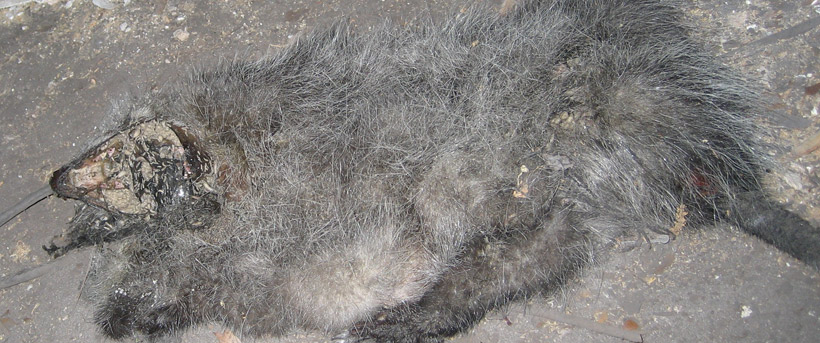While the vast majority of us think that the carcass of a dead animal is quite disgusting, others see it as a great place to begin life and get the kind of nutrition they desire. This is what happens with the fly.

These insects see a dead carcass as a chance to not only get the nutritional value that they are looking for, but to also start the life process from its beginning. If you’ve ever wondered what the life process of a fly looks like on the dead carcass of an animal, here’s some information for you.
When the adult fly lands on the dead carcass, the first thing that it does is lay eggs within the carcass itself. This will likely contain over 300 eggs that are laid, with each one holding an individual fly larva within it. Amazingly, within one 24-hour period, the fly is attached and ready to begin its life process.
Once the egg is attached, the larva migrates a little deeper into the carcass itself, feeding on the dead matter and the body fluids that remain inside the carcass itself. This whole process is considered to be the first instar of the fly’s life.
In the second instar, this is the time that the maggots, which is another name for the fly larva, continue to move across the dead carcass and will eat in large quantities. The group of 300 that are laid will move together, and devour the same area of the carcass together. This is what gives them such a creepy appearance as they huddled together to feed on the rotting flesh. The second phase takes another 24-hour period.
In the next instar, the maggots continue to move in feed at will. They will only move to make sure that they find another area that provides them with a lot of rotting flesh to be able to eat, but you will find that that they will increase in size exponentially during this period. While it takes about two days for this period to be completed, it is one of the most dramatic because of how great in size the larva increases.
The next phase is the pre-pupa which is the time that the maggots will migrate away from the rotting carcass, looking for a safer place for them to move into the next phase of their development. They have been well nourished during this time and are ready to start becoming adult flies.
The last phase is the pupa phase, and begins when the mag it starts to transform into an adult fly in a process known as puparium. This stage can take up to 10 days before it is completed, and once it is done the fly emerges and is ready to begin to get airborne. Interestingly enough, just two days after the adult has completed this phase it is ready to lay eggs and begin the process all over again. It truly is amazing how quickly these insects can reproduce.
Read more:
Florida Wildlife Control